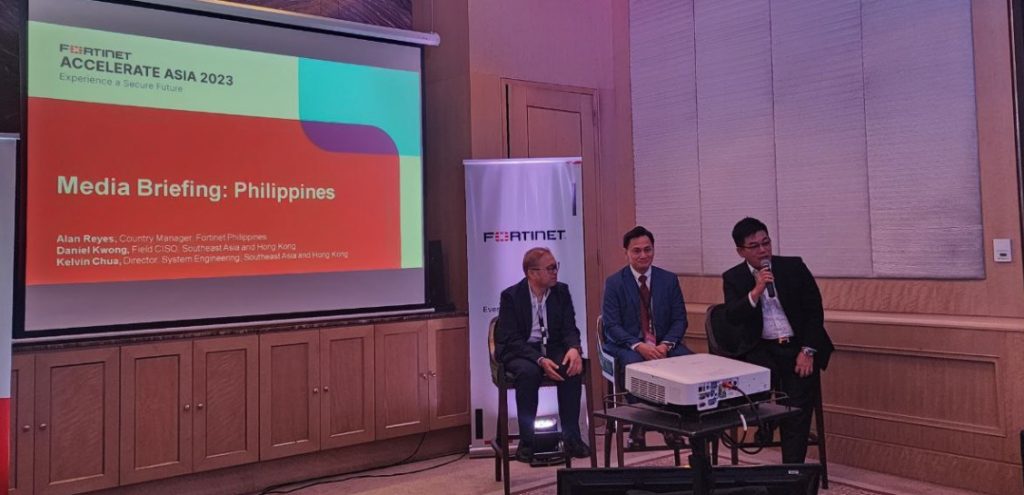Fortinet, a top cybersecurity company that combines networking and security, has just launched the FortiGuard Labs 2H 2023 Global Threat Landscape Report. This report gives an overview of the current threat landscape from July to December 2023, focusing on how quickly cyber attackers are taking advantage of new vulnerabilities and the increase in targeted ransomware and wiper attacks on industrial and OT sectors.

Key findings from the second half of 2023 include:
- Attacks started on average 4.76 days after new exploits were publicly disclosed: Like the 1H 2023 Global Threat Landscape Report, FortiGuard Labs sought to determine how long it takes for a vulnerability to move from initial release to exploitation, whether vulnerabilities with a high Exploit Prediction Scoring System (EPSS) score get exploited faster, and whether it could predict the average time-to-exploitation using EPSS data. Based on this analysis, the second half of 2023 saw attackers increase the speed with which they capitalized on newly publicized vulnerabilities (43% faster than 1H 2023). This shines a light on the need for vendors to dedicate themselves to internally discovering vulnerabilities and developing a patch before exploitation can occur (mitigate instances of 0-Day vulnerabilities). It also reinforces that vendors must proactively and transparently disclose vulnerabilities to customers to ensure they have the information needed to effectively protect their assets before cyber adversaries can exploit N-day vulnerabilities.
- Some N-Day vulnerabilities remain unpatched for 15+ years: It’s not just newly identified vulnerabilities that CISOs and security teams must worry about. Fortinet telemetry found that 41% of organizations detected exploits from signatures less than one month old and nearly every organization (98%) detected N-Day vulnerabilities that have existed for at least five years. FortiGuard Labs also continues to observe threat actors exploiting vulnerabilities that are more than 15 years old, reinforcing the need to remain vigilant about security hygiene and a continued prompt for organizations to act quickly through a consistent patching and updating program, employing best practices and guidance from organizations such as the Network Resilience Coalition to improve the overall security of networks.
- Less than 9% of all known endpoint vulnerabilities were targeted by attacks: In 2022, FortiGuard Labs introduced the concept of the “red zone,” which helps readers better understand how likely it is that threat actors will exploit specific vulnerabilities. To illustrate this point, the last three Global Threat Landscape Reports have looked at the total number of vulnerabilities targeting endpoints. In 2H 2023, research found that 0.7% of all CVEs (Common Vulnerabilities and Exposures) observed on endpoints are actually under attack, revealing a much smaller active attack surface for security teams to focus on and prioritize remediation efforts.
- 44% of all ransomware and wiper samples targeted the industrial sectors: Across all of Fortinet’s sensors, ransomware detections dropped by 70% compared to the first half of 2023. The observed slowdown in ransomware over the last year can best be attributed to attackers shifting away from the traditional “spray and pray” strategy to more of a targeted approach, aimed largely at the energy, healthcare, manufacturing, transportation and logistics, and automotive industries.
- Botnets showed incredible resiliency, taking on average 85 days for command and control (C2) communications to cease after first detection: While bot traffic remained steady relative to the first half of 2023, FortiGuard Labs continued to see the more prominent botnets of the last few years, such as Gh0st, Mirai, and ZeroAccess, but three new botnets emerged in the second half of 2023, including: AndroxGh0st, Prometei, and DarkGate.
- 38 of the 143 advanced persistent threat (APT) groups listed by MITRE were observed to be active during 2H 2023: FortiRecon, Fortinet’s digital risk protection service, intelligence indicates that 38 of the 143 Groups that MITRE tracks were active in the 2H 2023. Of those, Lazarus Group, Kimusky, APT28, APT29, Andariel, and OilRig were the most active groups. Given the targeted nature and relatively short-lived campaigns of APT and nation-state cyber groups compared to the long life and drawn-out campaigns of cybercriminals, the evolution and volume of activity in this area is something FortiGuard Labs will be tracking on an ongoing basis.
“The evolving threat landscape in The Philippines necessitates a shift to a platform-centric approach in cybersecurity. Traditional, disparate solutions can no longer manage the diverse technologies, hybrid work models, and IT/OT integration that characterize modern networks. Fortinet’s AI-powered, unified security and network platform addresses these complexities by providing comprehensive threat protection, automated vulnerability management, and streamlined operations. This integrated strategy not only reduces costs and operational complexity but also ensures that organizations can quickly adapt to new threats, thereby building robust and future-proof cybersecurity operations.” – Alan Reyes, Country Manager, The Philippines
The Global Threat Landscape Report for the second half of 2023 also features insights from FortiRecon, shedding light on the conversations among threat actors in dark web forums, marketplaces, Telegram channels, and more. Key findings cover various aspects.
- Threat actors discussed targeting organizations within the finance industry most often, followed by the business services and education sectors.
- More than 3,000 data breaches were shared on prominent dark web forums.
- 221 vulnerabilities were actively discussed on the darknet, while 237 vulnerabilities were discussed on Telegram channels.
- Over 850,000 payment cards were advertised for sale.
To combat cybercrime effectively, organizations must work together on a larger scale, beyond individual efforts. Collaboration with various high-profile organizations from public and private sectors, including CERTs, government entities, and academia, is crucial for enhancing global cyber resilience. Through ongoing technology innovation and partnerships with groups like Cyber Threat Alliance and Interpol, we can collectively strengthen defenses against cyber threats worldwide.




